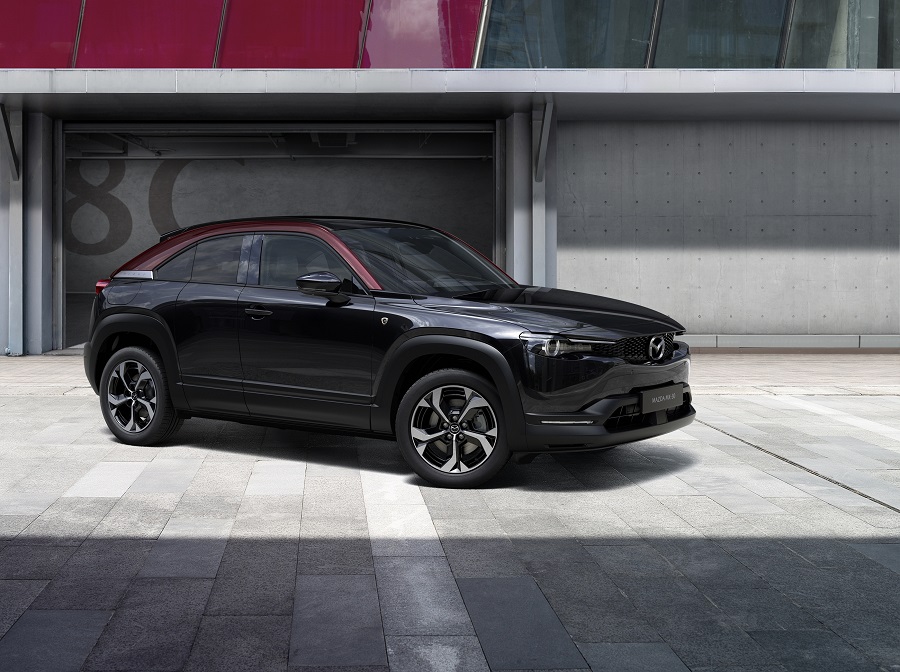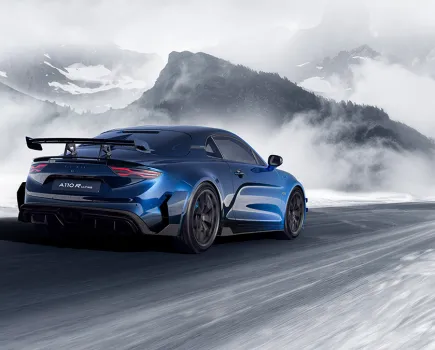The Mazda MX-30 R-EV reintroduces rotary powertrain tech in a whole new way. Here’s how it works.
Not too long ago, Mazda announced that their iconic Wankel rotary engines would be making a comeback, and naturally, that left us rather excited. Admittedly, that excitement waned somewhat when we learned that its comeback would be in the form of a range extender for an electric SUV…
Still, it’s a notable moment for all you rotary fans out there, and – as we’ll explain later – it makes the prospect of a new RX sportscar much more realistic than ever before. So, let’s have a look at the Mazda MX-30 R-EV in more detail, and explain just how this new Wankel hybrid tech works.
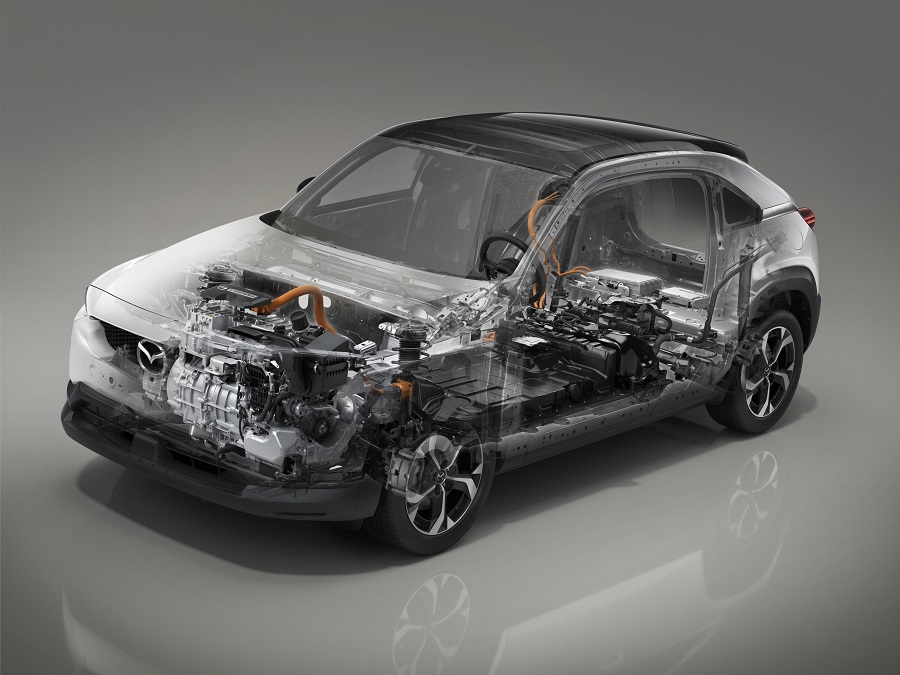
How Does Mazda’s New Hybrid Rotary Engine Work?
The Mazda MX-30 R-EV’s utterly unique powertrain makes use of three main components:
- A 165PS electric motor
- 17.8kWh lithium ion battery
- And now, an 830cc single-rotor 70PS Wankel rotary engine
The idea is actually pretty simple. Like the regular MX-30, the R-EV will mostly operate as a fully-electric car. The battery powers the motor, and that turns energy into movement at the wheels via the car’s drivetrain. However, the standard MX-30 (which uses a 35.5kWh battery) has notoriously rubbish range – about 124 miles on a good day. So, Mazda has attempted to rectify that problem by adding a tiny rotary engine to serve as a generator.
At no point will the rotary engine be powering the car’s wheels. Instead, it runs between 2500-4500rpm in order to generate more charge for the MX-30’s onboard battery. As such, the battery can continue to power the electric motors for longer (until the rotary’s 50-litre petrol tank runs out), giving you a far more palatable range in excess of 400 miles. What’s more, if you’re only travelling locally around town, you can still get 53 miles out of the battery in electric-only mode.
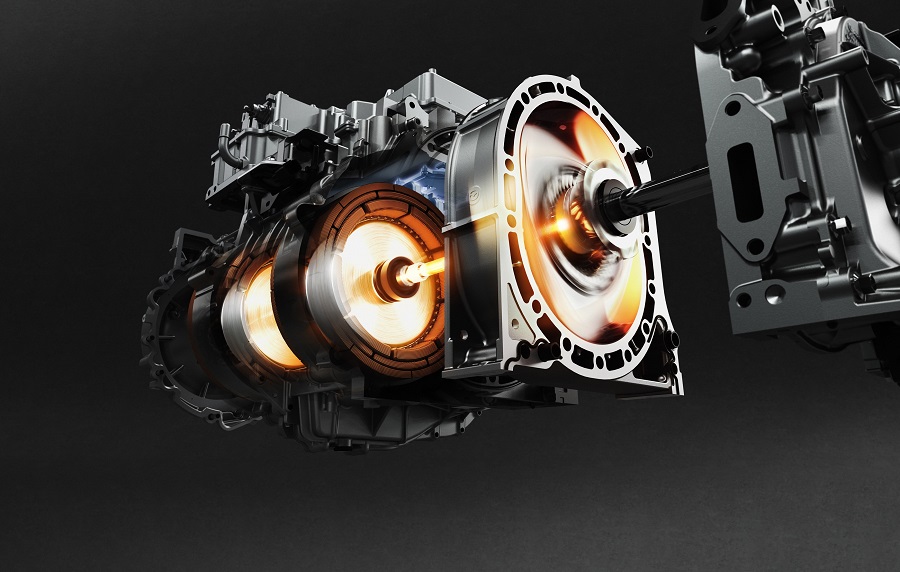
Changes to Rotary Engine Technology
To create the MX-30 R-EV’s range extender, Mazda hasn’t simply dived into its old stash of parts and found a few unused RX-8 motors. In fact, this new rotary engine really is *new*.
When you think about it, rotaries are perfectly suited to be range extenders. By design, you get plenty of power from small capacities, which is great from a packaging point of view. For the MX-30, Mazda seems to have taken that concept and ran with it.
Compared to the RX-8’s twin-rotor Renesis engine, the range extender rotary found in the MX-30 R-EV is 15kg lighter. This is because the whole block is just 840mm wide, while its single rotor’s radius spans just 120mm.
On top of that, this new engine now features direct fuel injection rather than port injection, which Mazda claims improves the economy of its Wankel rotary tech by around 25% – and reduces carbon dioxide emissions too.
Reliability has also been a focus area for Mazda, given the less-than-favourable reputation that the RX-8 had for going bang.
To extend the MX-30 R-EV’s life, Mazda has increased the engine’s compression ratio to 11:9, while its apex seals have also been made thicker and come with a new specially-developed coating to reduce wear.
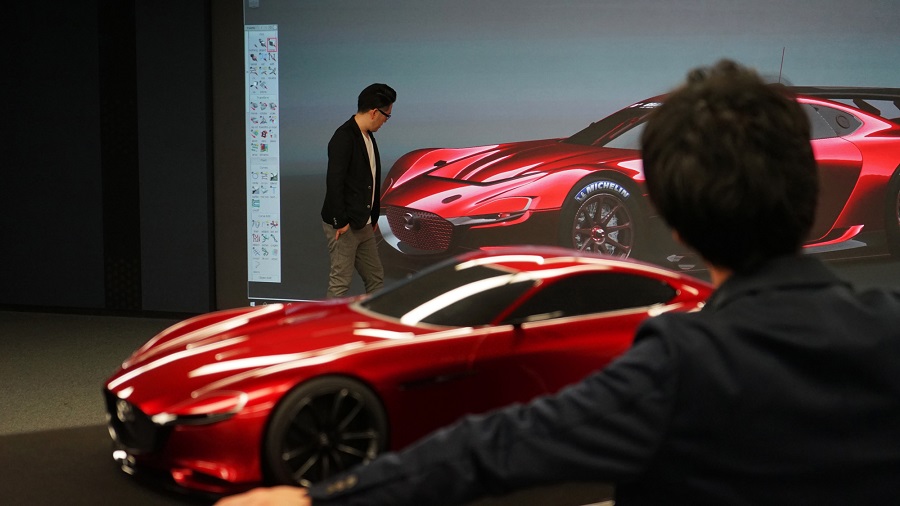
Is a Sportscar Coming Soon?
When the news of hybrid rotary tech was first announced, we speculated that this could be the catalyst for a new RX sportscar to begin development. But what do Mazda’s bosses say? Is this a reality?
In short, no. A new RX sportscar won’t be coming out ‘soon’. But that doesn’t mean never. In conversation with Autocar, Wakako Uefuji (Mazda program manager) said, “We need to keep the electrification of models for this era. This is the first thing we do but maybe in the future.”
Furthermore, Yoshiaki Noguchi (assistant manager of Mazda’s powertrains division) claimed that, “It’s a dream of engineers at Mazda to have a sports car with rotary.” However, he also admitted that “now is not the time for that. When the company situation is a lot better, we can think about that dream another time.”
To us, the situation seems clear. In the immediate present, Mazda needs to focus on electrification and profitability, which is likely to mean plenty of neatly styled but ultimately quite dull electric SUVs and crossovers. But, once those foundations are set in place, who knows – maybe Noguchi-san and his team of engineers will have their dreams realised in hybrid form.
Ultimately, Mazda are very proud of their ‘multi-solution approach’ to reducing emissions. They refuse to simply commit to battery-electric tech, and instead plan on developing more efficient combustion solutions too. For that reason, there’s bound to be a long future ahead for the rotary hybrid. Let’s all just hope that it eventually makes its way into a two-door coupe.
In the meantime though, the Mazda MX-30 R-EV is now officially on sale. So, if you fancy one of these over the more humdrum family crossovers on the market, you can pick one up for between £31,720-£37,950 depending on spec.

